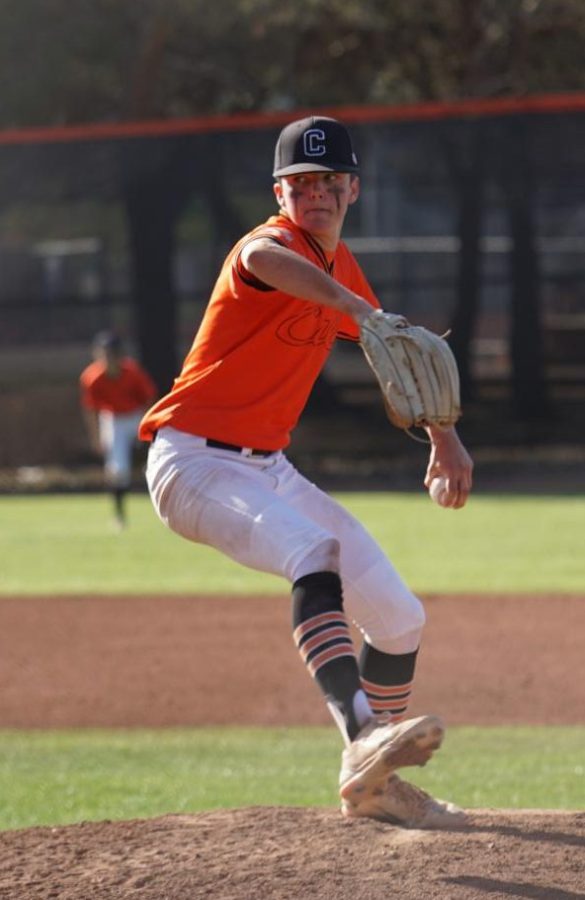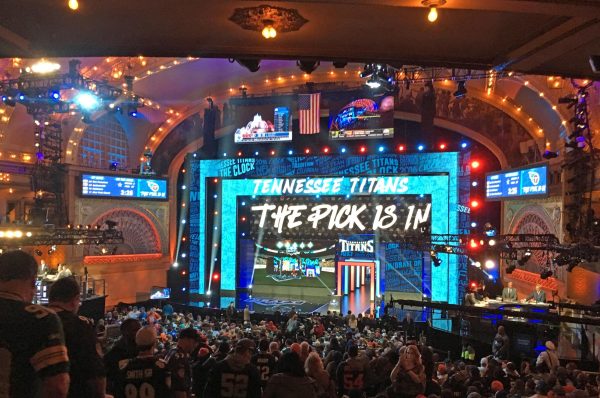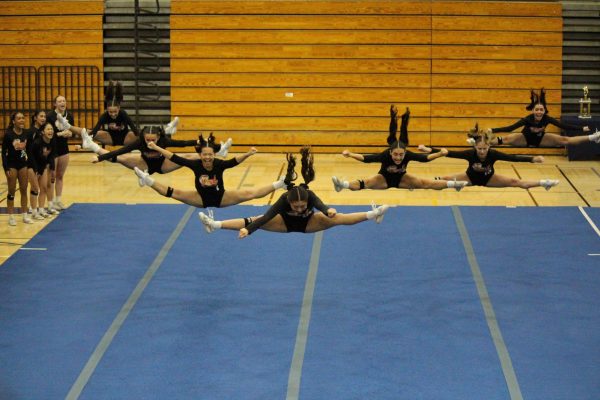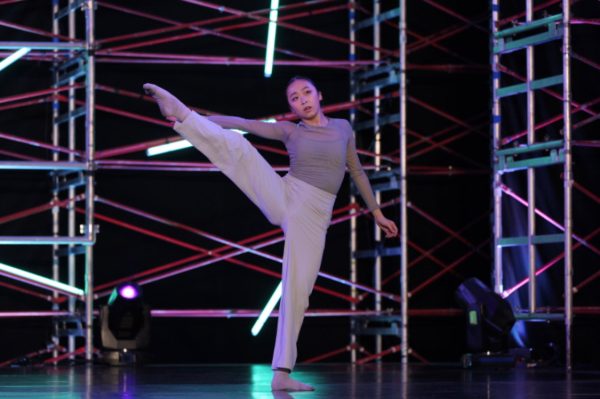Drastic MLB rule changes coming this season
Cal High players, coaches don’t like baseball’s new pitch clock
Junior Ben Johnson makes a pitch for the Grizzlies.
The Major League Baseball scene has had a notorious problem with game lengths.
The root cause stems from professional baseball being played for nine innings or more. Due to the nature of the game, there is no set amount of time, meaning games can last anywhere from two to four-plus hours.
Over the years, MLB games have been getting progressively longer. In the 1990s, baseball games generally clocked in at around two hours and 30 minutes, according to Statista.
But game times have increased by an average of 40 minutes in the past 20 years, with games in the 2021 season averaging about three hours and 10 minutes, Statista reported.
Unfortunately, this leads to the younger generation falling out of touch with the game. Sports such as basketball and football with defined rules regarding time, improve the pace of the game making it more enticing to the young audience.
To combat increasing game times, MLB announced last September new changes aimed at improving the pace of the game. These changes take effect this season.
The first significant change is the pitch clock. Pitchers now have 15 seconds to deliver the ball between pitches if the bases are empty, and 20 seconds if there are runners on base. There also is only 30 seconds allowed between batters.
MLB noticed that in the minor leagues, the pitch clock reduced the game time by 26 minutes.
Sophomore Grayden Wright, who plays for Cal High’s JV baseball team, likes the idea of a pitch clock idea but believes the times need to be increased.
“[The pitch clock] is too short and it needs to be longer,” Wright said. “I think 25 seconds, maybe 30 seconds would be good. I like how I can watch games faster now. I don’t have to sit there and wait for a hit.”
Another significant rule change regarding pitchers is the number of times they can throw to a base or step off the mound, which often helps prevent a runner from stealing a base. Pitchers used to be able to do this as much as they liked, but now pickoff throws and moves are limited to two per batter.
Cal High varsity baseball coach Dan Ward believes the rule changes are intended to improve the pace of the game, but he doesn’t like the new pickoff rules.
“Being a former pitcher, [the pickoff rules] hamstring the pitcher from controlling the running game,” Ward said.
Ward, however, advocates for the rule changes if they speed up play and make it more competitive.
On the other hand, sophomore Diego Landeros, who also plays for Cal’s JV team, doesn’t like how the rule changes increase the pace of the game.
“I think as a person when you want to go watch a game, you don’t want to watch a quick game,” Landeros said. “I think you just kind of want to sit down and watch a baseball game.”
One of the more significant rule changes that doesn’t involve pitching and the pace of play is the addition of larger bases. Initially, the bases were 15 square inches. But now the new rule modifies the bases to be 18 square inches.
The intention springs from the MLB wanting more steals attempts and a greater rate of success for stolen bases. Additionally, the larger bases mitigate the amount of oversliding, which is when a player’s momentum takes their slide through the base so they lose contact with it.
Wright likes the addition of bigger bases.
“I like seeing more aggressive plays on the bases,” Wright said. “It makes it more interesting to watch.”
The final significant rule change is defensive shift limits. All four infielders must have both feet inside the outer edge of the infield dirt, and two infielders must be on either side of second base, according to an article in the San Francisco Chronicle. Infielders cannot switch sides mid-inning, with the only exception being for a substitution.
MLB officials argued that defensive shift limits were introduced to increase the batting average on balls in play, and to allow infielders to display more of their athleticism.
What baseball is doing is nothing new. Professional and college basketball implemented rules regarding a shot clock to limit the time a team has to shoot before a turnover.
According to the Sports History Network, the shot clock for professional basketball was first implemented in 1954 after a game between the Minneapolis Lakers and Ft. Wayne Pistons in 1950. The Pistons had a controversial idea to slow down the pace of the game by keeping possession for most of the game.
As a result, fans and Lakers’ coach John Kundia were outraged. Thus, a 24-second shot clock was created to improve the pace of the game and increase the need to shoot.
In 1985, a shot clock was implemented for the first time in college basketball, giving teams 45 seconds for each possession. Before that, teams could sometimes waste several minutes of the game by playing keep away with the ball while milking the clock.
In 1993, the shot clock was shortened to 35 seconds and then cut down even more to 30 seconds in 2015, according to sports site Rookie Road.
The shot clock in basketball is a good example of a rule that creates a faster-paced, more exciting game that is tailored to a younger audience.
upcoming season have spurred a lot of opinions. Some believe them to be unnecessary, while others believe them to be a crucial part in breathing a second wind into the sport. But as it stands, baseball still captivates the eyes of many.

Junior March Chalasani returns for his third year with the Californian newspaper staff. In his free time, he enjoys hanging out with friends, hiking, playing...

Senior Lili Loney is the Photo Editor for The Californian. She has been in newspaper since junior year, starting as a photographer and becoming the Photo...





